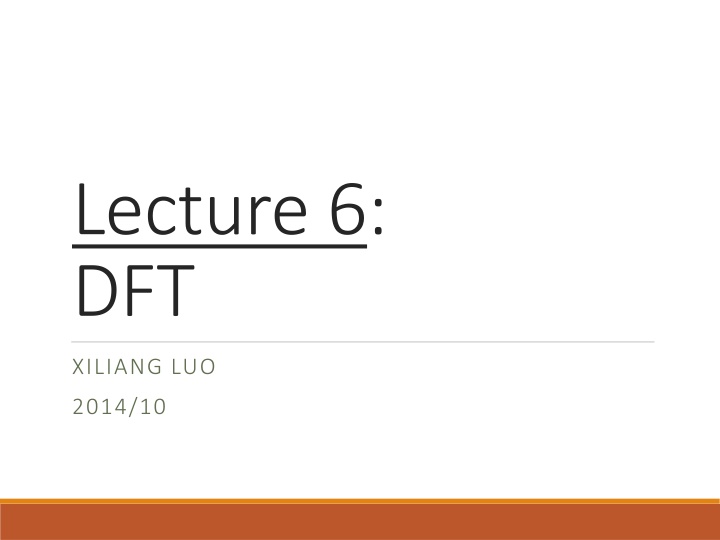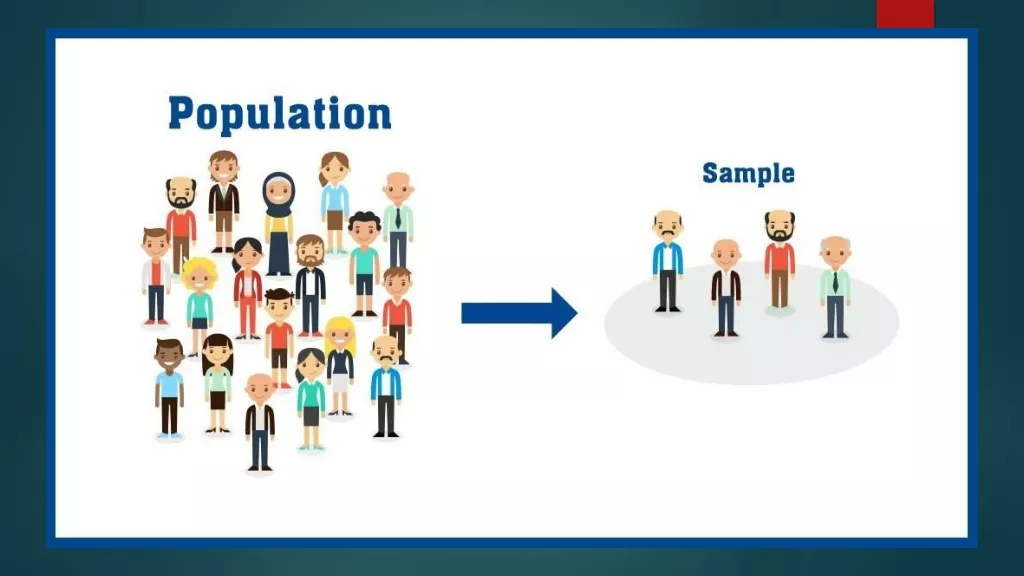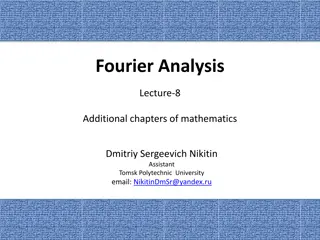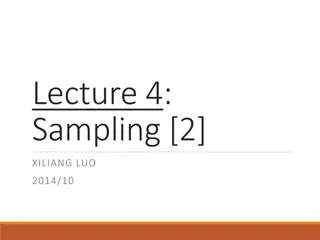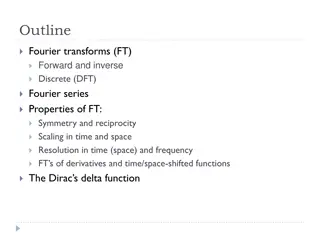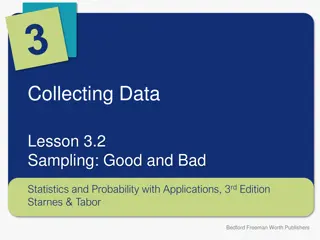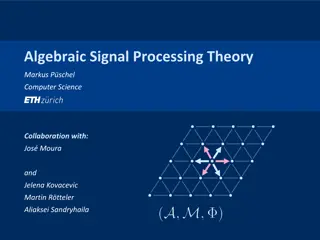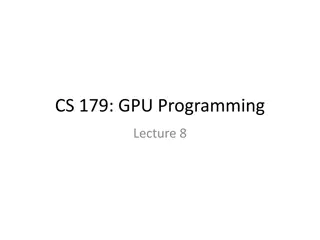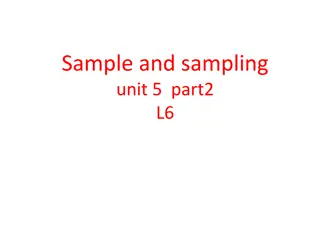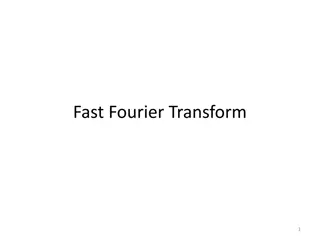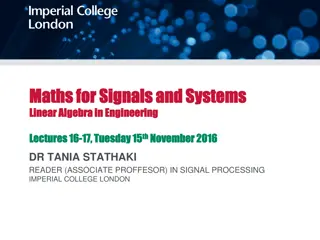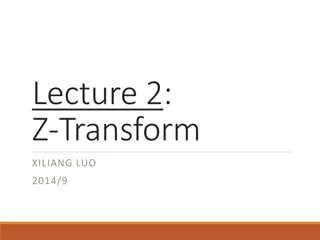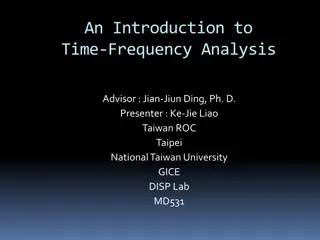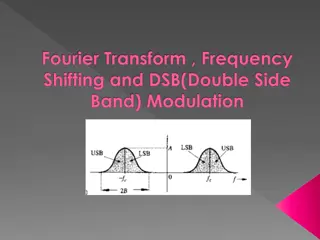Discrete Fourier Transform: Properties and Sampling Techniques
Explore the properties of Discrete Fourier Transform (DFT) including linearity, circular shift, duality, and circular convolution. Understand the sampling techniques for periodic signals and aperiodic sequences using DFT. Delve into the synthesis and analysis of DFS coefficients as well as the unit-circle sampling of the DTFT. Discover how DFT simplifies the analysis of finite-length sequences through periodic extension and DFT definition.
Download Presentation

Please find below an Image/Link to download the presentation.
The content on the website is provided AS IS for your information and personal use only. It may not be sold, licensed, or shared on other websites without obtaining consent from the author.If you encounter any issues during the download, it is possible that the publisher has removed the file from their server.
You are allowed to download the files provided on this website for personal or commercial use, subject to the condition that they are used lawfully. All files are the property of their respective owners.
The content on the website is provided AS IS for your information and personal use only. It may not be sold, licensed, or shared on other websites without obtaining consent from the author.
E N D
Presentation Transcript
Lecture 6: DFT XILIANG LUO 2014/10
Periodic Sequence Discrete Fourier Series For a sequence with period N, we only need N DFS coefs
DFS Synthesis Analysis
Example DFS of periodic impulse
DFS Properties Linearity: Shift:
DFS Properties Duality: Periodic Convolution:
Sampling Fourier Transform Sample the DTFT of an aperiodic sequence: Let the samples be the DFS coefficients:
Sampling Fourier Transform DTFT definition: Synthesized sequence:
Sampling Fourier Transform Synthesized sequence:
Sampling Fourier Transform Sampling the DTFT of the above sequence with N=12, 7
Discrete Fourier Transform For a finite-length sequence, we can do the periodic extension: or DFT definition:
Discrete Fourier Transform DFT is just sampling the unit-circle of the DTFT of x[n]
DFT Properties Linearity Circular shift of a sequence Duality
DFT Properties Circular convolution
Compute Linear Convolution In DSP, we often need to compute the linear convolution of two sequences. Considering the efficient algorithms available for DFT, i.e. FFT, we typically follow the following steps:
Compute Linear Convolution Linear convolution of two finite-length sequences of length L & P: How about circular convolution using length N=L+P-1?
Compute Linear Convolution Sampling DTFT of x[n] as DFS: one period
Compute Linear Convolution DFT/IDFT linear conv w/ aliasing
Compute Linear Convolution Circular convolution becomes linear convolution!
LTI System Implementation Block convolution
LTI System Implementation Overlap-Add Method
Overlap-Save Method P-point impulse response: h[n] L-point sequence: x[n] L > P We can perform an L-point circular convolution as: ? 1 ? ? = ? ?[ ? ??] ?=0 Observation: starting from sample: P-1, y[n] corresponds to linear convolution!
